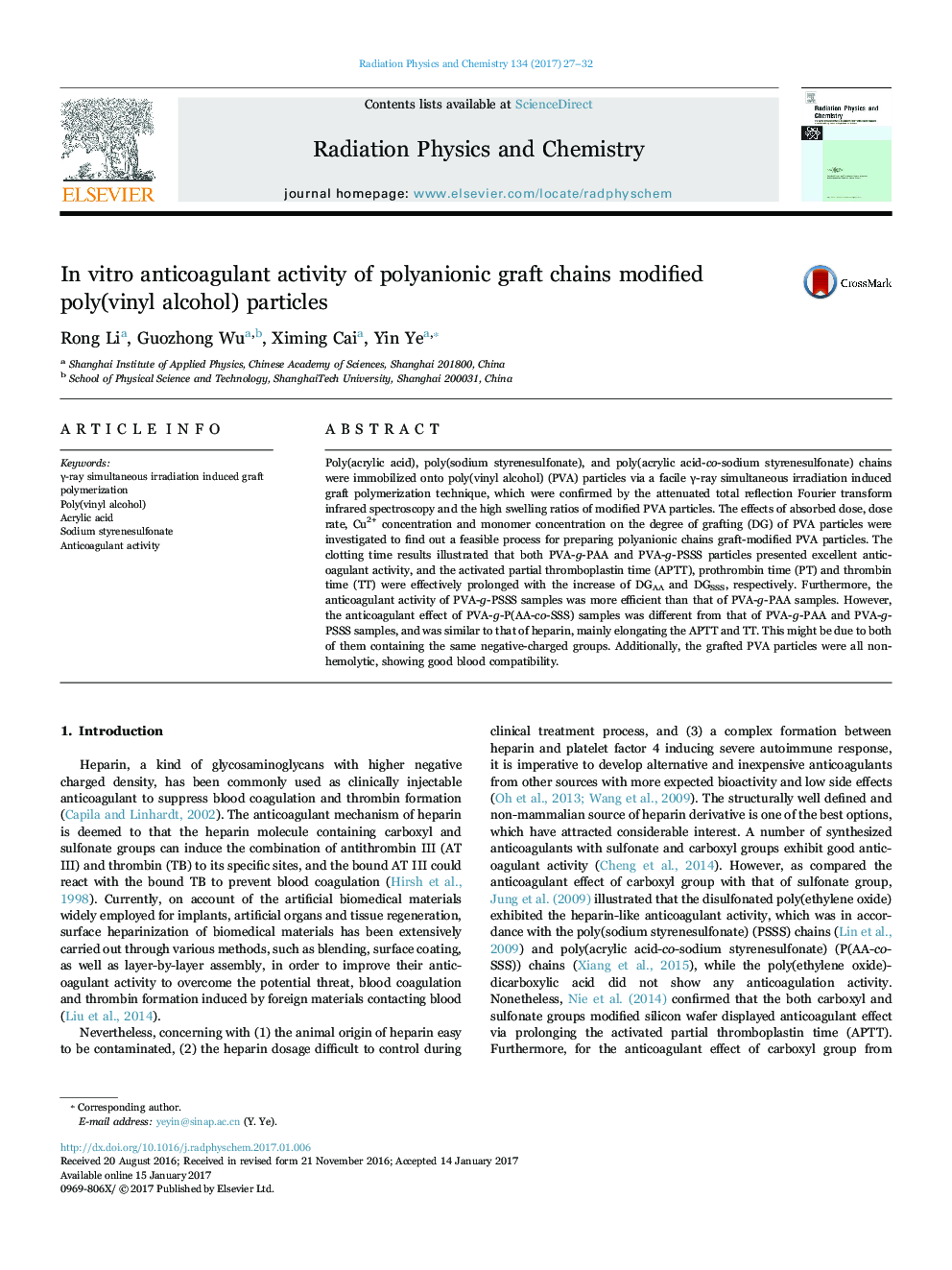| Article ID | Journal | Published Year | Pages | File Type |
|---|---|---|---|---|
| 5499379 | Radiation Physics and Chemistry | 2017 | 6 Pages |
Abstract
Poly(acrylic acid), poly(sodium styrenesulfonate), and poly(acrylic acid-co-sodium styrenesulfonate) chains were immobilized onto poly(vinyl alcohol) (PVA) particles via a facile γ-ray simultaneous irradiation induced graft polymerization technique, which were confirmed by the attenuated total reflection Fourier transform infrared spectroscopy and the high swelling ratios of modified PVA particles. The effects of absorbed dose, dose rate, Cu2+ concentration and monomer concentration on the degree of grafting (DG) of PVA particles were investigated to find out a feasible process for preparing polyanionic chains graft-modified PVA particles. The clotting time results illustrated that both PVA-g-PAA and PVA-g-PSSS particles presented excellent anticoagulant activity, and the activated partial thromboplastin time (APTT), prothrombin time (PT) and thrombin time (TT) were effectively prolonged with the increase of DGAA and DGSSS, respectively. Furthermore, the anticoagulant activity of PVA-g-PSSS samples was more efficient than that of PVA-g-PAA samples. However, the anticoagulant effect of PVA-g-P(AA-co-SSS) samples was different from that of PVA-g-PAA and PVA-g-PSSS samples, and was similar to that of heparin, mainly elongating the APTT and TT. This might be due to both of them containing the same negative-charged groups. Additionally, the grafted PVA particles were all non-hemolytic, showing good blood compatibility.
Related Topics
Physical Sciences and Engineering
Physics and Astronomy
Radiation
Authors
Rong Li, Guozhong Wu, Ximing Cai, Yin Ye,
